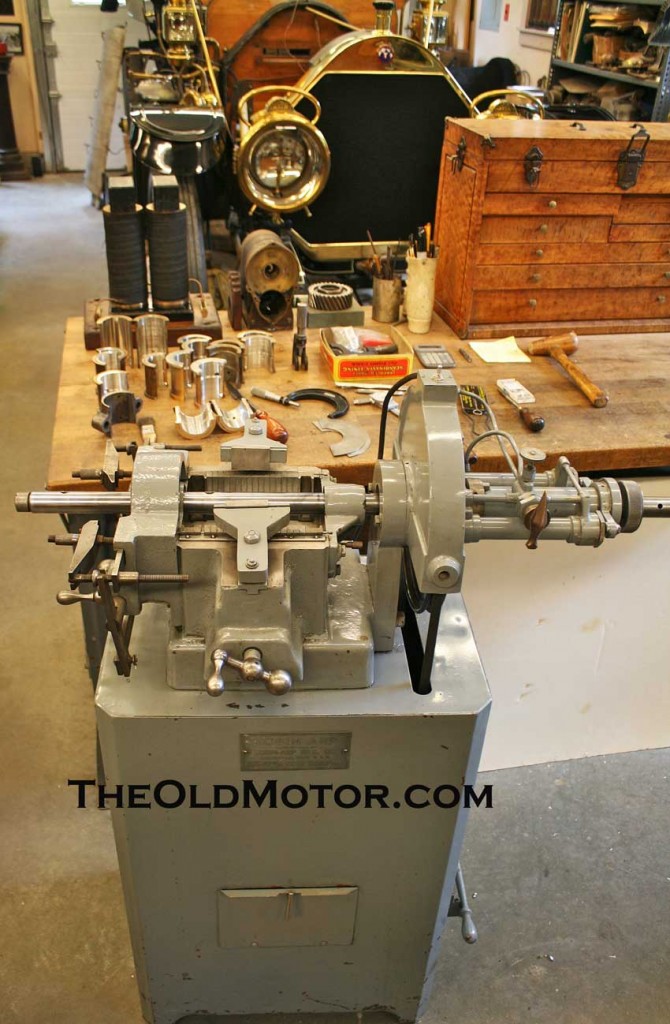
This post covers the next step in preparing the Thomas-Flyer main bearings, were the babbitt that was cast in previously, under goes several machining opperations. The link that follows, will take you to all of the previous posts on rebabbiting the Thomas-Flyer if you would like a refresher on what we have already covered.
The ends were last trimmed to length and the back side of the shells cleaned up to prepare them for this step. The photo (above) shows our Tobin-Arp bearing sizer which was used, back in the time for finishing semi-finished bearings from a bearing manufacturer to fit a crankshaft in the absence of a line-boring machine. You can also clamp a connecting rod on with the special clamps on the left hand side to bore it, or the inside of a bearing. This machine is probably 50-65 years old, and has been rebuilt here 20+ years ago.
We use it to semi-finish babbitted bearings to about .050″ (50 thousandths) or a bit less than 1/16″ under the crankshaft size. This machine saves much time and work over doing all of this in the line-boring machine, as you can take heavy and fast cuts without the soft chips clogging things up and causing problems. It can also be used for placing placing oil grooves in a bearing quickly. The machine comes with hundreds of different i.d. steel plates that are precision machined on the O.D. and I.D. They sit in the half round bed that you can see in the left photo (just above).
The center photo shows an as babbitted shell clamped in place. A precision hard-chromed boring bar rides in two carbide bushings (the bar and the bushings never wear) on the dead center of the bed and the one half of the bearing. The right photo above shows a cutter in the bar being set with a special micrometer which enables it to be set to within .00025″ of the size that you want to bore the bearing to.
If you look at the photo of the machine again (at the top) you can see a drive-head on the right hand side that turns the boring bar at one of two speeds. It also has incorporated with it, an infinitely adjustable hydraulic feed which feeds the bar in the direction you choose to bore to. The bearing halves first end up getting rough bored to make sure that there are no voids in the gravity cast babbitt. The front and rear bearings get bored to a smoother finish as they are used later on for setting up the crankcase to finish line-bore the bearings.
The left hand photo (just above) shows a bearing after it has been bored to size. The center photo shows a circular oil groove being cut with a grooving cutter. The right hand photo shows the “mud pockets” being cut on a vertical milling machine near the parting line of both halves with a rounded cutter. In an old style engine with babbitt bearings which are soft, the pocket serves two purposes. It holds a supply of oil that lubricates the length of the bearing and acts as an oil reservoir. Secondly, early engines not having oil filters, seals or filtered breathers always end up ingesting dirt which contaminates the oil, these pockets give this “mud” (dirt) a safer place to stay, instead of it continuing to rotate around with the crankshaft and wearing and grooving the shaft and bearings.
Below are the fourteen pairs of bearing halves for the seven main bearings semi-finished. They still need a bit of work cutting passages from some of the oil holes to the grooves. One other thing that needs to be done, is now that we are assured the the casings are good, is the time will be spent to clean up the parting faces of the bearing halves of the tinning residue and babbitt that aways ends up there after the pouring operation.
The next step is to get things ready and set up to finish these bearing to size in the line boring machine which we will show you in the next post.

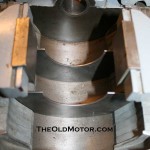
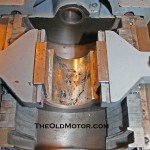

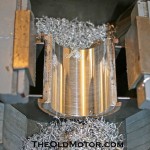
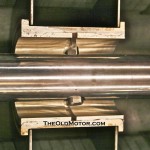
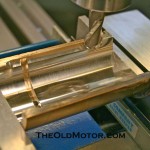
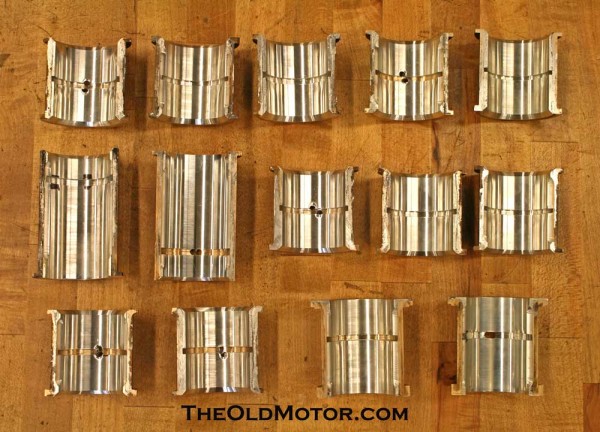
I believe I remember a similar Tobin-Arp machine at the late TriState Automotive Service in Brattleboro, Vt. When I first starting frequenting their establishment in the early 70’s they still had several splendid machinists who knew how to hold a tolerance on their then-aging equipment.
I am told, although I never actually saw it, that at one time you could pull up right outside their doors and the shop foreman Sonny Rabideaux would rebore your engine right there in the street with a portable machine.
David, I have a similar Tobin ARP bearing sizer. Do you have any photo of the rod mounting end? We never had the rod mounting pieces with our machine and would like to try and replicate something. Thanks
George, no, sorry I don’t. We only use this machine for semi-finishing the babbitt bearing bores in newly machined main and rod bearing inserts produced here in the shop.
For machining connecting rods and babbitt bearings we use the LeBlond connecting rod lathe visible in the left rear corner. It was purchased new by the Federal-Mogul regional branch babbitting facility in Hartford CT.